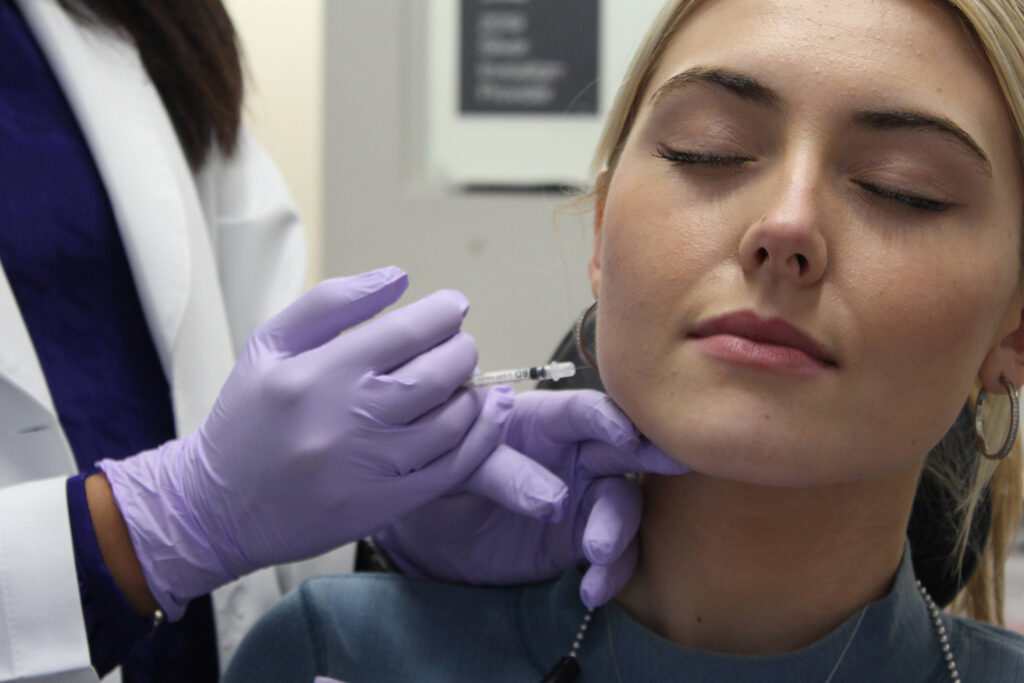Botox
Botox has been primarily used as a cosmetic treatment for wrinkles and lines on the face. However, Botox has a long history of medically therapeutic uses.
Largely due to its minimally invasive nature, the use of Botox in dentistry is expanding to treat dental conditions like high lip lines, Temporomandibular Joint Disorder, Bruxism and more.

Uses of Botox in Dental Treatments
Our providers are certified and have years of training in Botox to help patients achieve better esthetic outcomes as well as help treat muscle spasms that cause grinding and clenching.
Patients with a high lip line can use Botox to help relax lip muscles and achieve a lower, more esthetically pleasing smile line. This is a popular option because the entire process isn’t very invasive and can provide a more immediate form of treatment.


Patients dealing with Temporomandibular Joint Disorder can benefit from Botox injections, as well. TMJ disorders can cause severe pain from hyperactivity of the muscles and treatment options have been limited in the past. Now, Botox can simply relax these muscles and dental professionals can offer quick and efficient pain relief.
Bruxism (grinding and clenching) can also be minimized with Botox treatments by reducing the force of the muscular contractions involved. These injections can make a useful adjunct therapy to night guard appliances.

Common Myths About Botox
Despite Botox’s prevalence over the last few years, there are still plenty of misconceptions surrounding this popular treatment. Here are some common myths about Botox:
- Botox injections lead to a frozen face — A lot of people believe Botox injections will make them lose the ability to make facial expressions. This is not true, Botox treatment relaxes the muscles at the injection point. As long as you’re receiving treatment from a skilled injector, you will be able to display the entire range of facial expressions!
- Botox is only effective for removing lines — Botox has more use than simply addressing facial wrinkles or removing lines. In addition to the eye and dental benefits of Botox, there are plenty of additional medical uses, including treating TMJ conditions, back and neck pain, hyperhidrosis, and even treating migraines.
- Botox injections are painful — For many, just about any procedure seems like it would be painful. When the term “injection” is used — that especially sounds like it would hurt. But with Botox, that couldn’t be further from the truth. The majority of Botox patients have stated that the injections feel much more like a slight pinch if anything at all. In order to keep patients at ease during administration, a topical anesthetic like Comfortox BLT with Comfortox 31g syringes are used that are specifically designed for Botox injections. That’s it — no other anesthetic is needed for this procedure and the pain levels are extremely low.
- Wrinkles will worsen if you stop getting Botox — Another common myth is that once a person begins Botox treatment, their wrinkles will worsen once treatment stops. On the contrary, Botox will not worsen wrinkle formation. Instead, the wrinkles will actually begin to return to how they looked initially, prior to Botox treatment.
- Botox treatments are toxic — The FDA would not approve something that is toxic. With over 20 years of use for a multitude of conditions, Botox has a long and well-established history of safety. If you’re still worried, know that it would take a dose of more than 100 times the average cosmetic dosage for Botox to be toxic.